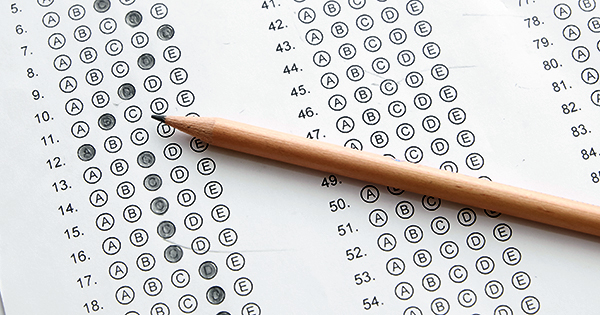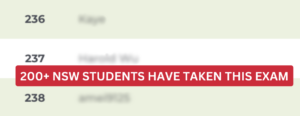NSW Selective Test: Can Standardised Tests Really Measure Intelligence?
- January 12, 2024
- 3:34 pm
- No Comments
In a Boston public school study of 1,400 eighth-graders, schools that increased scores on the Massachusetts Comprehensive Assessment System (an equivalent of the NSW Selective) Test) didn’t boost students’ fluid intelligence correspondingly.
In fact, fluid intelligence or the ability to think abstractly and solve new problems, was hardly affected by the educational interventions that significantly boosted standardised test scores. The findings of the MIT-led study has grave implications for educational systems worldwide – Australia’s included. What this suggests is that while raising scores on high-stakes standardised tests like the Selective test is beneficial, it does not encompass all aspects of a student’s intellectual capabilities.
Another study by the Brookings Institution, found that 50-80% of year-to-year test score improvements are only temporary and “caused by fluctuations that had nothing to do with long-term changes in learning.” These tests are instead, better viewed as measures of a student’s preparation. Here’s why.

The One-Size-Fits-All Problem & ‘Multiple Intelligences’
Standardised tests are inherently uniform, requiring all test-takers to respond to the same set of questions. This approach disregards the diversity in learning styles and the multiple types of intelligence that individuals possess.
Howard Gardner’s theory of multiple intelligences points out that there are at least eight different types of intelligence, yet standardised tests are not designed to accommodate these variances. This results in a narrow and sometimes misleading representation of a student’s true capabilities, suggesting that these tests are more reflective of a student’s test preparation rather than their overall intellectual or cognitive abilities.
As educator Sam Webb notes, “Standardised testing assumes everyone learns the same way. As students grow older, they learn what works best for them and how they learn. This does not translate to how standardised tests are created, given that there is only one way to take them.”
The Format Is About Familiarity
The structure of standardised tests favours those who are familiar with their format and have extensively prepared for them. These tests often consist of specific types of questions and timed sections, particularly in tests like the SAT, which are known for their multiple-choice format.
This focus on preparation and familiarity over innate intelligence is further evidenced by the Commission on Reading’s report, which notes that standardised tests frequently fail to encompass the comprehensive skills required to understand complex texts or the contextual knowledge that enriches reading comprehension.
Cultural Accessibility and Socioeconomic Disparities
Consider this question: A plant’s fruit always contains seeds. Which of the items below is not a fruit?
orange
pumpkin
apple
celery
In this particular question from a 6th-grade science test, students are initially informed about a characteristic of fruits, specifically that they contain seeds. Subsequently, students are tasked with determining which item from a list does not qualify as a fruit by identifying the one that lacks seeds. For those familiar with celery, it’s well-known to be devoid of seeds, making it the correct answer.
However, consider a scenario where, as a child, you were not exposed to celery because it wasn’t affordable or available in your household. Or perhaps, your early experiences didn’t include learning that pumpkins are, in fact, seed-bearing. Such a lack of exposure can significantly affect your ability to answer this question correctly. Children who have had direct experiences with a wider variety of fruits and vegetables are more likely to answer correctly compared to those who have not, indicating a bias toward children with certain socioeconomic backgrounds.
This example illustrates how economic or cultural disparities can influence performance on standardised tests, as they often assume a level of familiarity with certain concepts that not all children may have due to differences in upbringing and access to resources.
“The higher your family’s socioeconomic status is, the more likely you are to do well on a number of the test items you’ll encounter in such a test,” James Popham, Emeritus Professor in the UCLA Graduate School of Education and Information Studies, notes on ASCD.
The Rise of Test-Optional Admissions
In response to the growing criticism of standardised tests, many colleges and universities are adopting test-optional admissions policies.
“Only 5% of about 850 member schools are requesting scores in 2021-2022, compared to 55% in 2019,” according to College Admission App Common Application. By allowing students to choose whether to submit their scores, educational institutions acknowledge that standardised tests might not be the best or only indicator of a student’s abilities and potential.
What Is To Be Done Then?
Critics of standardised testing, including renowned psychologist Robert Sternberg, suggest that alternative approaches such as the Piagetian and information processing methods might provide more valuable insights into students’ cognitive abilities and learning styles.
For instance, when standardised tests evaluate grammar through isolated questions on subject-verb agreement, they fail to encompass the comprehensive abilities required to compose an entire essay. Significantly, many skills vital for excelling in standardised tests aren’t typically the focus of what we instil in our children. Consider problem-solving, for example. Ideally, we encourage children to identify and define problems, collect necessary information, and persistently work towards the most effective solution. However, standardised tests often present students with pre-defined problems unrelated to practical, real-life scenarios, prompting them to quickly select the best answer from given options, without truly engaging in a deep, solution-finding process.
But, the above-mentioned approaches emphasise the application of knowledge and skills in contextually rich settings, contrasting with the decontextualized and narrow scope of standardised tests. As educational systems evolve, there is a growing need to develop assessment methods that recognize the multifaceted nature of intelligence and learning, moving beyond the ready-made, one-size-fits-all problems characteristic of traditional standardised tests.
Need help navigating the NSW Selective Test 2024 and NSW Selective Test 2025? Reach out here: https://scholarlytraining.com/whatsapp

